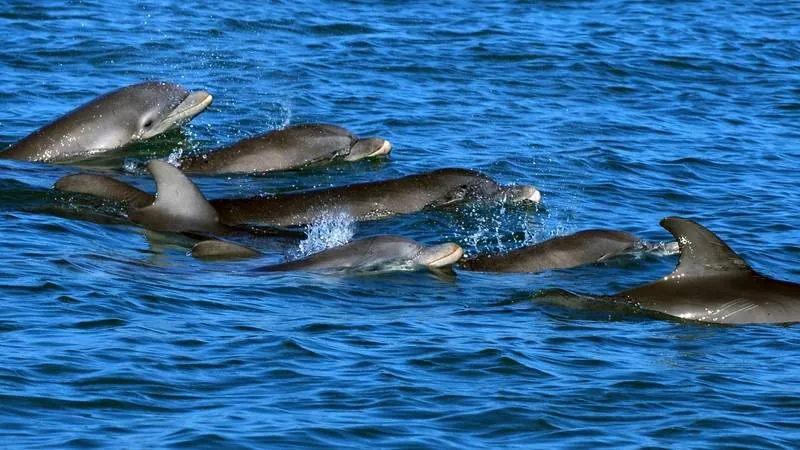
Breakthrough in Dolphin Communication: Researchers Unravel Possible Language-Like Signals!
2025-05-30
Author: Jia
Dolphins Speak? Major Discovery Shakes Up Marine Biology
In a stunning development that could change our understanding of marine communication, researchers from the Woods Hole Oceanographic Institution (WHOI) and partners, including the Brookfield Zoo Chicago’s Sarasota Dolphin Research Program (SDRP), have been awarded the first-ever Coller Dolittle Challenge for their groundbreaking work on potential language-like communication in dolphins.
A Global Competition Highlighting Innovative Research
The $100,000 prize was announced by the Jeremy Coller Foundation and Tel Aviv University during a virtual event that featured four leading research teams from around the globe, including those focusing on communication patterns in monkeys, nightingales, and cuttlefish. These finalists showcased remarkable innovations that harnessed technology and scientific insight to decode the sounds of various non-human species.
Listening to Dolphins: A New Frontier in Communication Studies
Led by biologist Laela Sayigh, the WHOI team—including experts like Peter Tyack and members from the SDRP—focused on a community of bottlenose dolphins in Sarasota, Florida. Their research delved into non-signature whistles, which account for nearly half of all dolphin sounds. Unlike signature whistles that serve as vocal names, non-signature whistles have largely been overlooked in studies until now.
Unpacking the Mystery: Dolphins and Their Whistle Types
The winning study revealed distinctive non-signature whistle types used by multiple dolphins for communication. Conducting playback experiments in their natural habitat, researchers discovered one specific whistle that prompted defensive reactions from the dolphins, hinting at its role as an alarm signal. Another whistle triggered queries in response to unfamiliar situations, further indicating a sophisticated level of interaction.
Revolutionary Techniques Provide Unique Insights
To capture these incredible sounds, Sayigh's team employed non-invasive suction-cup hydrophones during routine health assessments, allowing for unprecedented recordings of individual dolphins in their natural environment. This innovative approach not only enhances our understanding of dolphin communication but also paves the way for future research into the complexities of interspecies interactions.
The Future of Marine Communication Research
As researchers continue to explore the depths of dolphin communication, this major breakthrough ignites hope for deciphering the language of the sea’s most intelligent inhabitants. Who knows what other secrets these incredible creatures are hiding beneath the waves?

 Brasil (PT)
Brasil (PT)
 Canada (EN)
Canada (EN)
 Chile (ES)
Chile (ES)
 Česko (CS)
Česko (CS)
 대한민국 (KO)
대한민국 (KO)
 España (ES)
España (ES)
 France (FR)
France (FR)
 Hong Kong (EN)
Hong Kong (EN)
 Italia (IT)
Italia (IT)
 日本 (JA)
日本 (JA)
 Magyarország (HU)
Magyarország (HU)
 Norge (NO)
Norge (NO)
 Polska (PL)
Polska (PL)
 Schweiz (DE)
Schweiz (DE)
 Singapore (EN)
Singapore (EN)
 Sverige (SV)
Sverige (SV)
 Suomi (FI)
Suomi (FI)
 Türkiye (TR)
Türkiye (TR)
 الإمارات العربية المتحدة (AR)
الإمارات العربية المتحدة (AR)